Search results for 'yellow pigment'
-
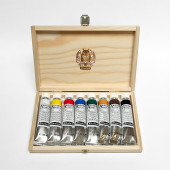
Schmincke Akademie Acryl Color Royal Academy of Arts Set
£20.00Schmincke Akademie Acryl Color in association with the RA (Royal Academy of Arts) Learn More -
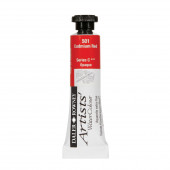
Daler-Rowney Artists Watercolour 5ml Tube
Starting at: £7.10
Artists' Water Colour is a professional quality water colour. Based on the finest modern and traditional pigments, it is precisely formulated to offer unparalleled performance and permanence. Learn More -
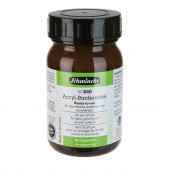
-
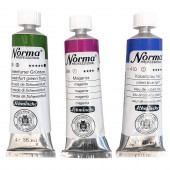
Schmincke Norma Professional 35ml
Starting at: £8.15
Professional grade artist's oil paints. High pigment concentration. High lightfastness. Learn More -
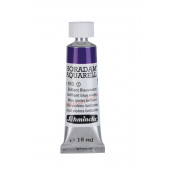
Schmincke Horadam Aquarell, Artists' Watercolour, 15 ml Tube
Starting at: £12.65
Finest quality watercolours made in Germany. This range offers 139 colours, including 95 single-pigment colours, 3 perylene pigments, 5 quinacridone pigments, and a selection of granulating colours. They present endless mixing possibilities, and can combined with Schmincke's selection of watercolour mediums as well as with their gouache paints. The solid colours are produced by pouring the liquid paint into the pans four times, ensuring the maximum yield for each colour. Also available in half and whole pans and 5ml tubes. Learn More -
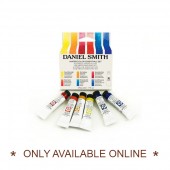
Daniel Smith Watercolour Essentials Set
£36.30The new set has six x 5ml transparent watercolours. The pigments were carefully selected to give you a wide range of colours and values. When mixed together the colours you can create are endless! The Essentials set contains Hansa Yellow Light, New Gamboge, Quinacridone Rose, Pyrrol Scarlet, Phthalo Blue GS, French Ultramarine in 5ml tubes. so you have both cool and warm Yellows, Reds and Blues. *Please note, this product is stored offsite. Please allow extra time for your order to be processed and dispatched. Learn More -
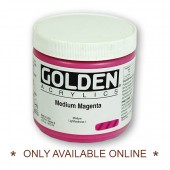
Golden Heavy Body Acrylic 473ml
Starting at: £47.30
The first acrylic colors offered by Golden Acrylic, Heavy Body paints are known for their exceptionally smooth, buttery consistency. The Heavy Body palette includes the largest assortment of unique pure pigments in a 100% acrylic emulsion available to professional artists. These colours offer excellent permanency and lightfastness. There are no fillers, extenders, opacifiers, toners, or dyes added. *Please note, this range is stored offsite. Please allow extra time for your order to be processed and dispatched. Learn More -
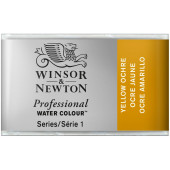
W&N Professional Watercolour Whole Pan
Starting at: £9.55
Water colour, more than any other medium, reflects the unique characteristics of the pigments used and our Professional Water Colours use only the finest pigments, and are known for their brilliance, permanence and strength of colour. Learn More
-
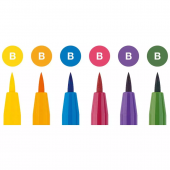
Faber-Castell Brush Pen Basic Set
£21.95Flexible brush tip. Extremely fade resistant colours made with pigmented drawing ink. Waterproof and PH neutral. Cadmium yellow, Chrome Yellow Deep, Phthalo Blue, Carmine, Violet, Olive Green. Learn More -
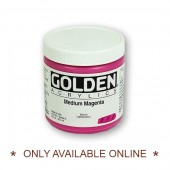
Golden Heavy Body Acrylic 236ml
Starting at: £29.40
The first acrylic colors offered by Golden Acrylic, Heavy Body paints are known for their exceptionally smooth, buttery consistency. The Heavy Body palette includes the largest assortment of unique pure pigments in a 100% acrylic emulsion available to professional artists. These colours offer excellent permanency and lightfastness. There are no fillers, extenders, opacifiers, toners, or dyes added. *Please note, this range is stored offsite. Please allow extra time for your order to be processed and dispatched. Learn More -
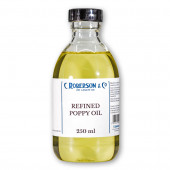
Roberson Poppy Oil
Starting at: £10.20
Poppy Oil is a slightly later addition to the artist's cabinet than Linseed Oil and Walnut Oil. It is generally used as a binder for pale colours, where the warmth of Linseed Oil is not desired. It provides a matte finish and dries very slowly, so we would not advise using it in conjunction with slow-drying pigments or in underpaintings. A paint film produced by Poppy Oil is weaker and softer than that created by Linseed Oil. This is because it contains a smaller percentage of linolenic acid than Linseed Oil; this substance imparts both strength and yellowness to an oil.
Although some of these properties can be perceived as drawbacks, paints made with Poppy Oil generally obtain a "short" or buttery texture without the addition of waxes or other additives, which can be an advantage for certain colours that produce poor consistencies in Linseed oil alone. Sometimes, the addition of a small quantity of Poppy Oil when grinding a tricky or "stringy" pigment in Cold Pressed Linseed Oil can introduce some of benefits of Poppy Oil, without transmitting its negative characteristics.
Paints made with Poppy Oil are particularly suited to "alla prima" working methods, where paint is applied spontaneously. When working in successive layers, Poppy Oil would only be appropriate for the final stages of a painting.
Learn More -
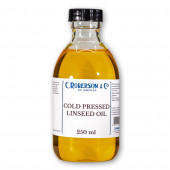
Roberson Cold Pressed Linseed Oil
Starting at: £7.50
Linseed Oil is derived from flax seeds, and appears on our shelves in many guises: Cold Pressed, Refined, Stand Oil, and as a key ingredient in many mediums. It has been appreciated for its drying properties since the Medieval period, and has become the most popular oil used in painting today due to the strong, flexible and glossy film that it creates. Cold Pressed Linseed Oil is ideal for the grinding of pigment to make oil paints. The process of producing Cold Pressed Linseed Oil results in a lower yield, but the resultant oil is of a superior quality to oil that has been extracted by other methods, creating a paint film that is more resistant to embrittlement on aging. Its yellow colour is caused by the high concentration of linolenic acid, the presence of which provides durability to the paint film. The amount of oil that each pigment requires can vary enormously. Alizarin Crimson, for example, requires a high percentage of oil compared to most other colours. We would always recommend mulling the pigment and oil together thoroughly to create a "short" or buttery paste, with evenly dispersed, well-coated pigment particles. This process contributes to the strength and flexibility of the paint film, and prevents the inclusion of excess oil. Origin: USA Learn More -
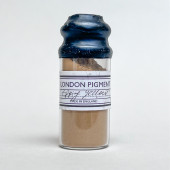
London Pigment, Epping Forest Yellow Ochre Pigment
£18.00Call to Order
This soft yellow ochre is sourced from near the ancient woodland of Epping Forest in North London. Given legal status by Henry ll as a Royal hunting ground for the Monarchy this forest has a rich cultural and geological history. This pigment is a fine particle size and is semi-opaque.
Follow @londonpigment on Instagram for an insight into the stories behind the colours and how she makes them.
****Please note, these pigments are artisan made in small batches. Please email info@cornelissen.com for availability**** Learn More
-
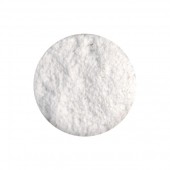
Flake White Pigment
Starting at: £18.75
Call to Order
PW1
Flake White Pigment, sometimes referred to as Lead White or Cremnitz White, is an artificial mineral pigment, lead carbonate. It is no longer available as a paint, due to its extreme toxicity. For this reason, great care must be taken when handling the dry pigment.
Lead is a highly poisonous metal which, if inhaled, ingested, or introduced to the blood through cuts in the skin, builds up in the body and can affect multiple parts of the body, including the digestive and nervous systems.
PERMITTED USES: Restoration of art works and protected buildings when alternatives unsuitable.
IMPORTANT: Please refer to the MSDS (Material Safety Data Sheet) below.
SHIPPING: Please note, we are not able to send this product outside the UK.
Learn More -
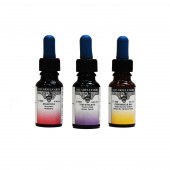
Rohrer & Klingner Liquid Watercolour Inks
Starting at: £9.30
Call to Order
Liquid Watercolour (series 27). 18 shades of highly concentrated organic pigment in a light acrylic base. Low dosage of the binder allows dried colour to be dissolved up to 24 hours after application. Colours retain their strength when diluted with water, Drying Retarder or Gloss Intensifier mediums. Undiluted applications may bronze when dry. Learn More -
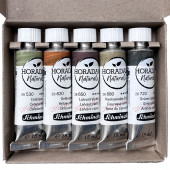
Schmincke Horadam Naturals Set Earths
£49.00Call to Order
Schmincke Horadam Naturals Set Earth Pigments 5 x 15 ml Celadonite Yellow Ochre Lalvarit Violet Caucasus Earth Green Slate Learn More




